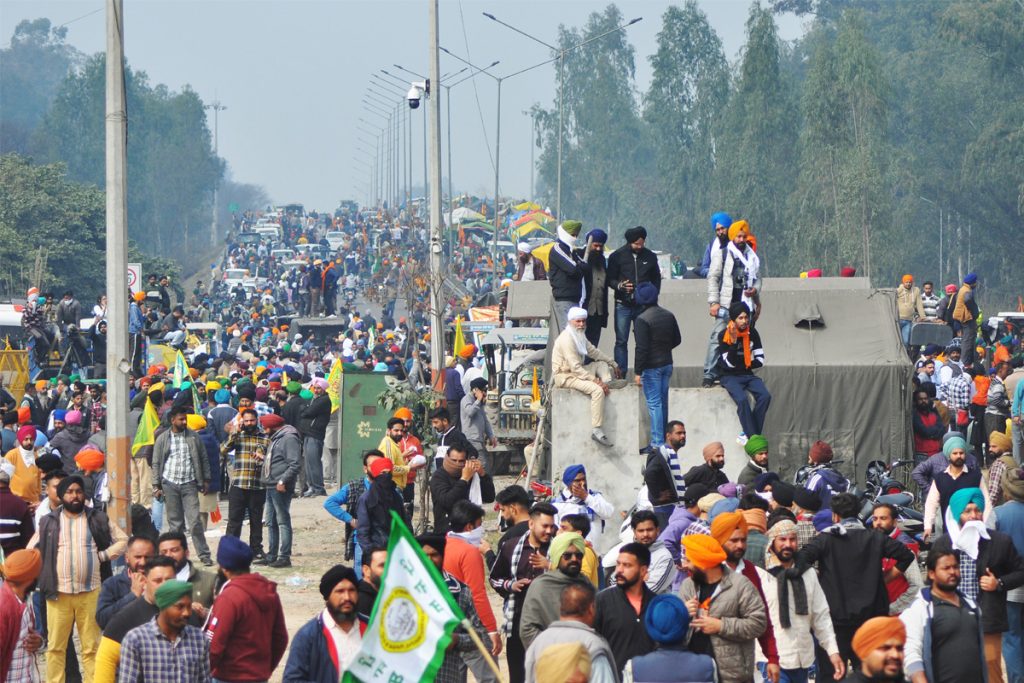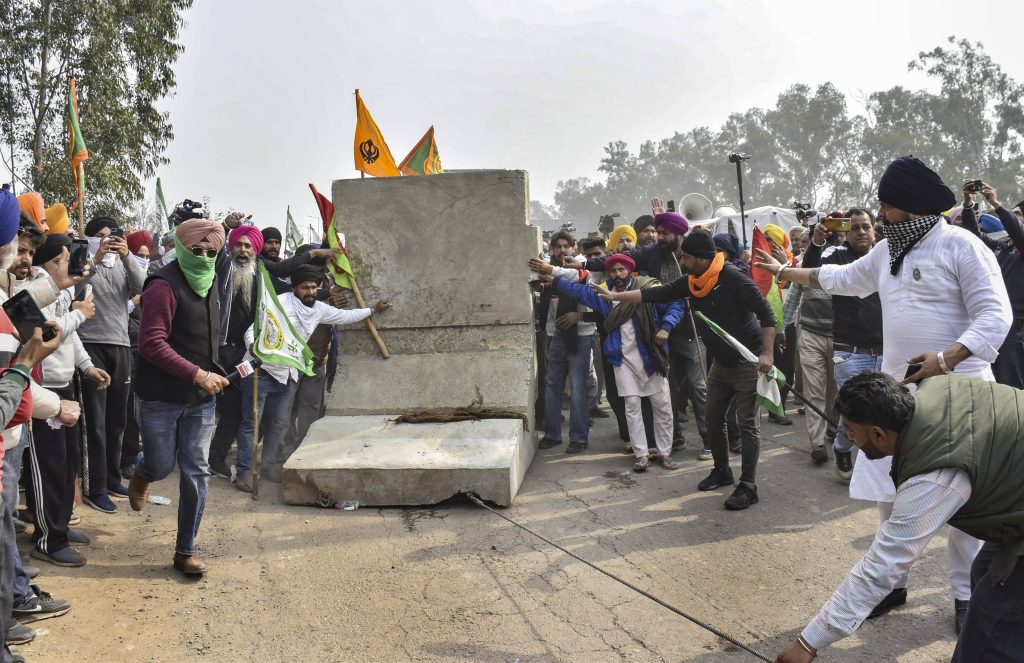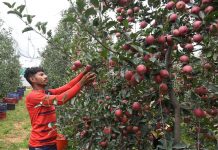With Punjab farmers adamant on their “Delhi Chalo’’ tractor march to press various demands including MSP for their crops, the Haryana authorities have a tough task at hand given the skirmishes between police and farmers on day one of the agitation itself, writes Rajesh Moudgil

The Shambhu barrier on the Ambala-Patiala border turned out to be the epicentre of clashes between Haryana police and a multitudes of farmers from Punjab amid the rain of teargas shells on February 13 – the day one of their “Delhi Chalo’’ march to press for their various demands including minimum support price for their crops and loan waivers.
Not only Punjab-Haryana borders including Khanauri border which also saw skirmishes between farmers and police, tens of thousands of motorists and commuters of the national capital region (NCR), especially those bordering parts of Uttar Pradesh and Haryana, underwent harrowing times due to the Delhi authorities’ tight security at its borders.

At Shambhu border, throngs of young farmers not only made repeated attempts to uproot the cement and iron barricades, but also succeeded in removing a couple of them, physically, and throwing them into the seasonal ghaggar river running below the bridge of the Shambhu border. They could also be seen hurling stones at the drones while these dropped teargas shells.
According to reports, dozens of people including a few journalists, police personnel and farmers were hurt in the action at the two borders.
This confrontation was imminent after the second round of the talks between the farmers unions and the Union ministers over the former’s demands had failed to yield any results.
Apart from Shambhu barrier which is on the GT road (national highway No 44), confrontation between the Punjab farmers and police was also witnessed at the Khanauri border which is on national highway No 52 joining Sangrur district (Punjab) and the Jind district of Haryana. Here, too, the farmers faced teargas shells after skirmishes with police following which the latter also resorted to cane-charge. There were also reports about tension mounting on the borders of two states at Kaithal, Sirsa and Jhajjar.
Even though there were meetings among the farmer leaders to decide the future course of action, groups of women had also flocked the Shambhu protest site. The number of farmers at the Khanauri border was also said to be swelling.
They ‘came prepared’ for long haul
The Haryana authorities’ steps to thwart them notwithstanding, the protesting farmers appeared resolute and apparently prepared to counter police action. While the police used drones to drop teargas shells on the farmers, they could be seen with their faces covered with wet clothes and in many cases with headgears equipped with masks.
Besides, the tens of hundreds of farmers who had come with trolleys full of ration, utensils and even makeshift toilets appeared ready for a long stay in case of need. Scores of trolleys could also be seen loaded with firewood, fuel, fans and coolers, besides adequate beddings.
Industries, motorists suffer
Meanwhile, amid the farmers’ stir, it was the industrial and business houses and tens of thousands of motorists who suffered because of the sealed borders and stretches of the national highways connecting Punjab with Haryana. The motorists choosing diversions and alternative routes too underwent harrowing times in the wake of jams there.
The industrialists and the business houses of Sonepat and Jhajjar also bemoaned the huge losses being caused to them because of the farmers’ agitation as they recall how they suffered huge losses during the 2020-2021 stir. Similar views came from the industries cluster of Bahadurgarh which has Tikri border where tension was also said to be mounting due to the farmers’ stir.
HC for protest at designated area
Meanwhile, the Punjab and Haryana High Court which was hearing a plea against the suspension of internet services in Haryana and sealing of state borders in view of the farmers’ march, has suggested that the states should identify a designated area for the protesters.
The High Court has issued notices asking the Punjab, Haryana and Union government for a status report and favoured resolving the dispute by urging the parties involved to sit down and solve the problem on February 15.
Notably, the High Court has also questioned the Haryana government for putting the blockades on the highways in view of the farmers’ march. “Keeping in view the exigencies of the situation and the general hardship being caused to the public, the court is sanguine that all the parties to the present dispute would make efforts to sit down and solve the problem, and even if a demonstration has to take place, an area should be identified by both the States to allow peaceful agitation by the protesters,” the bench of acting Chief Justice G S Sandhawalia and Justice Lapita Banerji said.
The Bench also directed that the Kisan Mazdoor Morcha and Samyukta Kisan Morcha (non-political) should be made “necessary respondents’’ and the state of Delhi, through its Home secretary, was also directed to be made a “necessary party’’.
The Bench further held that it was undisputed that the right to free passage of the public at large was to be balanced with the right to freedom of speech and expression and none of them existing in isolation could be put forth so that the public was not put to any inconvenience.
However, Additional Solicitor-General of India Satya Pal Jain told the Bench that two meetings had been held to resolve the issues raised by the agitators and were attended by union ministers and secretaries. Haryana Additional Advocate-General Deepak Sabharwal submitted that Haryana had taken necessary precautions having received an advisory from the Union of India and that there was an apprehension that the tractor-trailers had been modified to storm barricades. The protesters were also equipped for a “long sit-out’’, he said.
However, the Punjab Advocate-General Gurminder Singh held that Punjab had not set up any barricades or hindrances to ensure free movements on the highways since the protest was peaceful.












